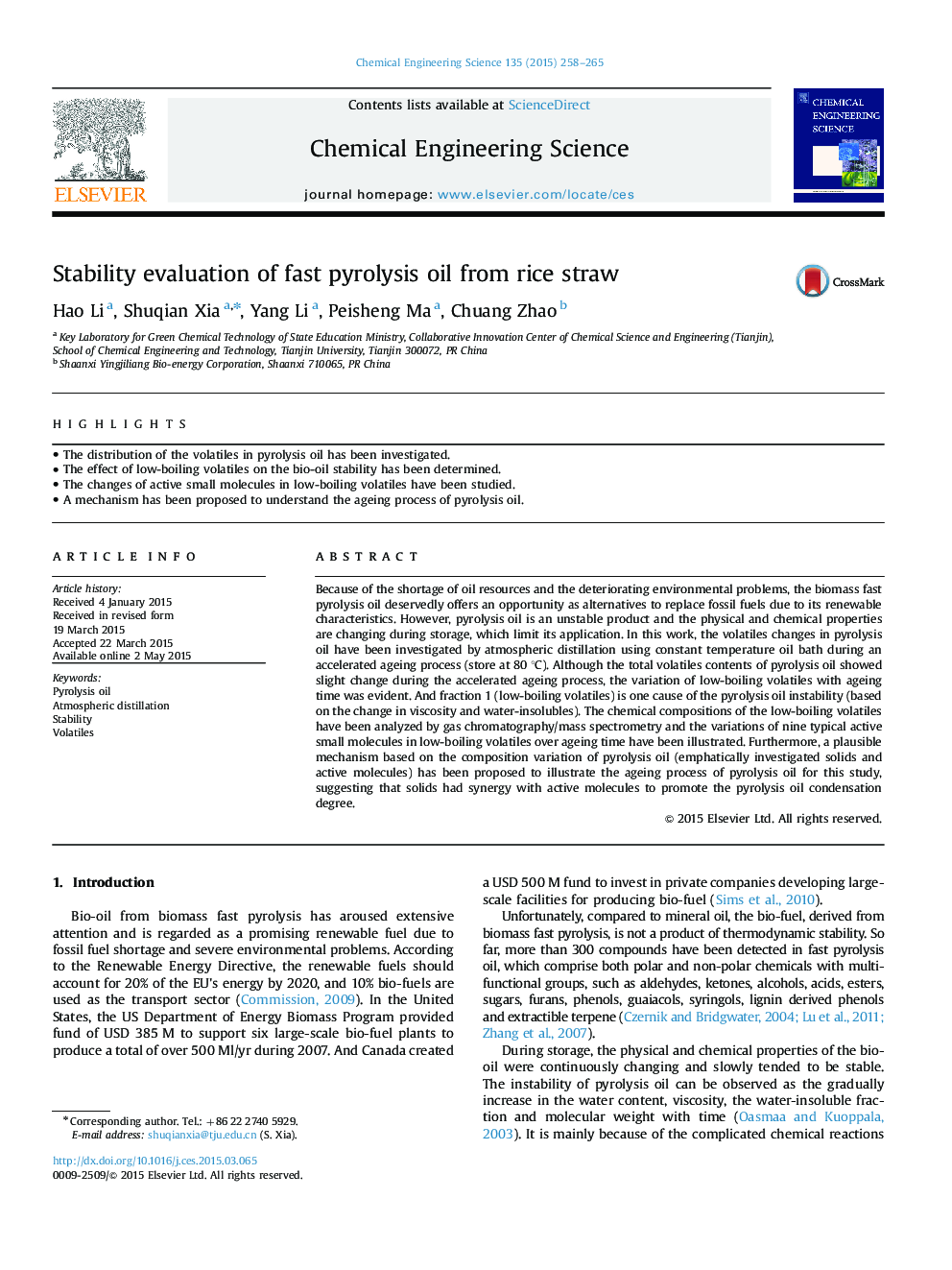| Article ID | Journal | Published Year | Pages | File Type |
|---|---|---|---|---|
| 154710 | Chemical Engineering Science | 2015 | 8 Pages |
•The distribution of the volatiles in pyrolysis oil has been investigated.•The effect of low-boiling volatiles on the bio-oil stability has been determined.•The changes of active small molecules in low-boiling volatiles have been studied.•A mechanism has been proposed to understand the ageing process of pyrolysis oil.
Because of the shortage of oil resources and the deteriorating environmental problems, the biomass fast pyrolysis oil deservedly offers an opportunity as alternatives to replace fossil fuels due to its renewable characteristics. However, pyrolysis oil is an unstable product and the physical and chemical properties are changing during storage, which limit its application. In this work, the volatiles changes in pyrolysis oil have been investigated by atmospheric distillation using constant temperature oil bath during an accelerated ageing process (store at 80 °C). Although the total volatiles contents of pyrolysis oil showed slight change during the accelerated ageing process, the variation of low-boiling volatiles with ageing time was evident. And fraction 1 (low-boiling volatiles) is one cause of the pyrolysis oil instability (based on the change in viscosity and water-insolubles). The chemical compositions of the low-boiling volatiles have been analyzed by gas chromatography/mass spectrometry and the variations of nine typical active small molecules in low-boiling volatiles over ageing time have been illustrated. Furthermore, a plausible mechanism based on the composition variation of pyrolysis oil (emphatically investigated solids and active molecules) has been proposed to illustrate the ageing process of pyrolysis oil for this study, suggesting that solids had synergy with active molecules to promote the pyrolysis oil condensation degree.
